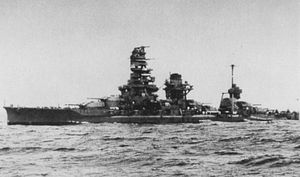As the centenary of World War I winds toward its close, it is worth taking some time to consider how the conflict shaped the military organizations that conducted it. In particular, the experience of the Imperial Japanese Navy (IJN) in the First World War has received relatively little attention, especially with regard to its contributions late in the conflict.
Most of the Japanese naval contribution to the war came in the Pacific, where a combination of opportunism and compliance with treaty obligations had brought Japan into the war in late 1914. Japanese forces seized German possessions in China and across the Pacific, as well as pursuing and patrolling for raiders. The seizure of territory in the Pacific led to tension with London, Australia, and New Zealand, but no serious conflict. The raider threat continued through 1916 and 1917, as German auxiliary cruisers wreaked havoc in the Indian Ocean. Japanese warships patrolled these waters, escorting troops and goods to support the war effort in Europe. Japanese forces also helped put down a brief revolt by Indian troops at Singapore.
But the Imperial Japanese Navy also made a more direct contribution to the European war effort. From late 1914 on, the British made repeated requests for the deployment of Japanese naval forces in support of allied forces in Europe, although Tokyo rebuffed such requests. By 1916, however, the Japanese government had reconsidered, apparently seeing some value in the experience that could be gained from a long-range, long-term naval deployment. In 1917, the British requested the deployment of a Japanese squadron to the Mediterranean, in order to assist with escort and anti-submarine duties.
Japan finally complied with British requests in the spring of 1917. The light cruiser Akashi and eight destroyers arrived in Malta in April 1917. Along with additional ships that arrived later, these constituted the Second Special Squadron. At that point, the Austro-Hungarian and Ottoman fleets were largely bottled up and overmatched by the combination of Italian, French, and British ships. However, the Japanese could (and did) contribute to the anti-submarine mission. The U-boat war had left the Royal Navy hard-pressed, despite its continuing advantage over the Germans in the North Sea. The Second Special Squadron did not sink any submarines, but it did defend against several attacks and conduct rescues of shipwrecked sailors. The destroyer HIJMS Sakaki took a torpedo from a German submarine in June 1917, but managed to make port despite the deaths of 59 sailors.
Altogether, three cruisers and 12 destroyers served the Allied cause in the Mediterranean. British officers rated Japanese naval professionalism as significantly higher than that of the French or the Italians. Japan also undoubtedly gained experience at anti-submarine warfare, as well as with the long-term maintenance of a long-range naval squadron. The deployment didn’t save the Anglo-Japanese alliance, which would be eclipsed by the Washington Naval Treaty system, but it did generate goodwill between the two countries and the two navies.
Of course, had the Allies not enjoyed presumptive naval advantage over the Germans by 1917, the Imperial Japanese Navy might have committed more to the fray. Japan possessed several dreadnoughts and battlecruisers capable of serving with the Grand Fleet, if the need had arisen. Fortunately or no, the Battle of Jutland made the British advantage over the Germans clear, meaning that the IJN could remain in the Pacific.

































